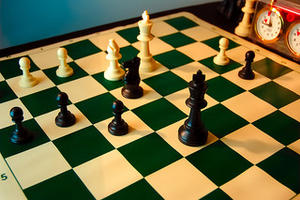Playing chess against a computer opponent is fairly commonplace stuff today. But the development of computers able to play chess competitively led to many important milestones in artificial intelligence, culminating (at least for now) with Watson, the famous Jeopardy!-playing computer, and Siri, the iPhone virtual assistant.
If you're interested in learning more about the history of artificial intelligence, here are three important chess computers:
Kotok-McCarthy
The Kotok-McCarthy computer was was developed between the years of 1959 and 1962 by a group of students at MIT. Advanced for the time, it was very slow by today's standards: it took anywhere from five to twenty minutes to calculate a single move! This computer also participated in the very first chess match between two machines, losing to a slightly more advanced computer from the Institute of Theoretical and Experimental Physics.
Deep Thought
Deep Thought was developed in a partnership between Carnegie Mellon University and IBM; it was named after a fictional computer in the book series The Hitchhiker’s Guide to the Galaxy. The computer won the North American Computer Chess Championship in 1988 and the World Computer Chess Championship in 1989. Deep Thought is perhaps most well known for losing two widely-publicized games to chess champion Gerry Kasparov.
Deep Blue
Deep Blue was developed as a successor to Deep Thought. In 1997, it beat Gerry Kasparov twice yet losing the match 4-2. The match was controversial, as Kasparov later accused technicians of making moves on Deep Blue's behalf. The match — and the controversy — later became the subject for a documentary called Game Over: Kasparov and the Machine.

 Equal Housing Opportunity
Equal Housing Opportunity